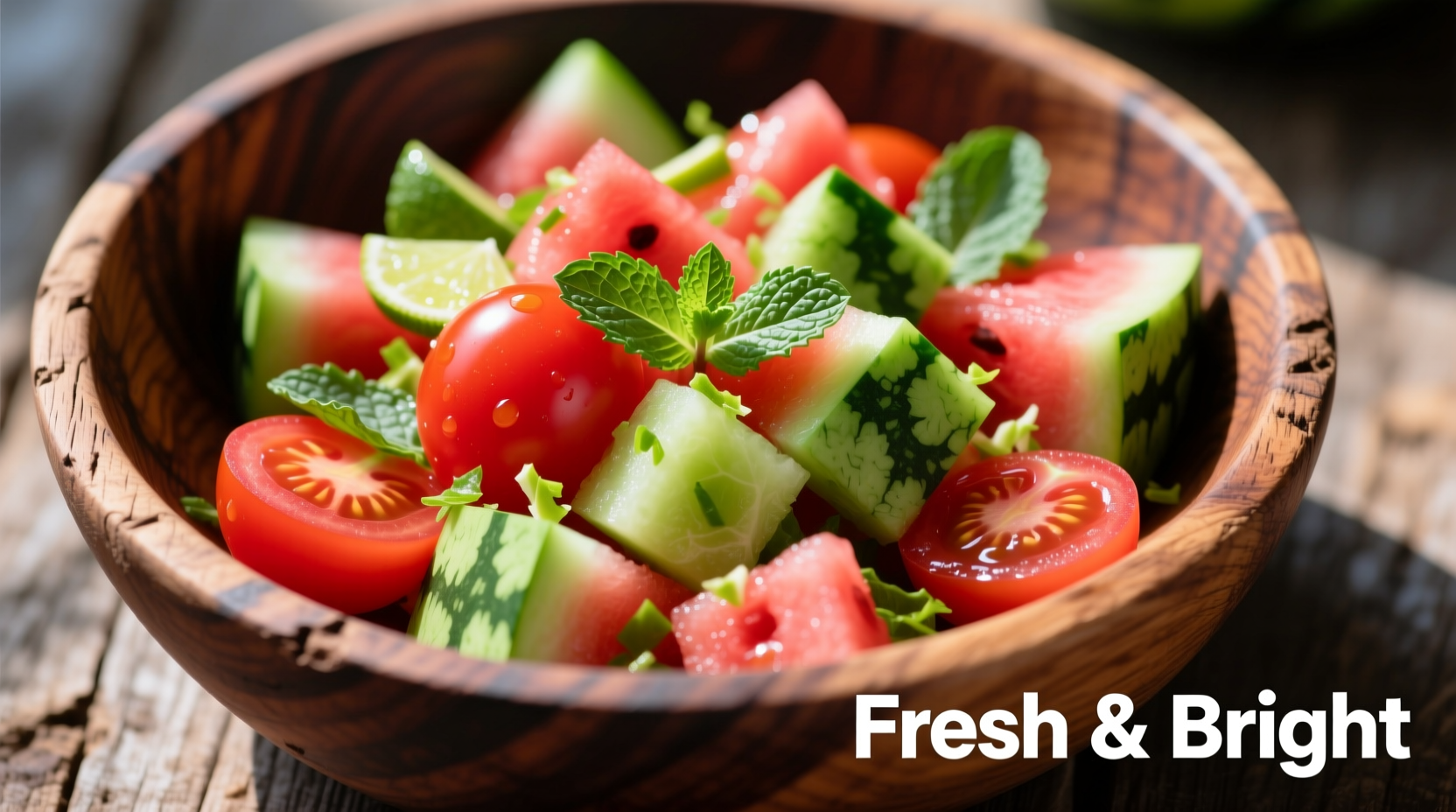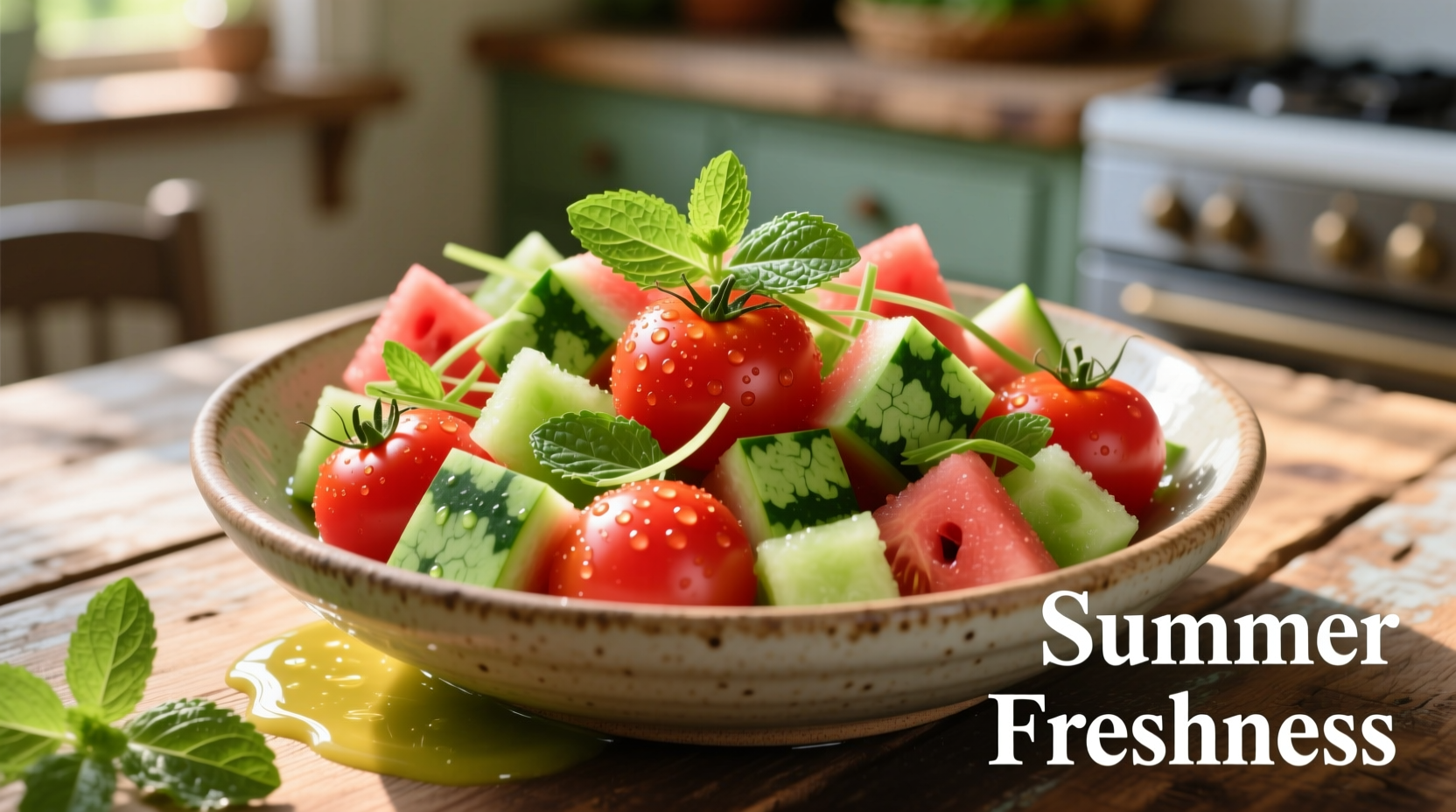Discover why this unexpected pairing has become a summer staple across Mediterranean and Southern cuisines. Our comprehensive guide reveals the science behind the perfect tomato watermelon salad ratio, selection tips for peak-season ingredients, and professional chef techniques that transform simple components into a restaurant-quality dish.
The Science Behind This Refreshing Combination
Tomatoes and watermelon might seem like an unusual pairing at first glance, but their complementary flavor profiles create a harmonious balance. Watermelon's natural sweetness (measured at 9-12 Brix) perfectly offsets the tomatoes' acidity (pH 4.3-4.9), while both share glutamic acid compounds that enhance umami perception. According to flavor scientists at the Culinary Institute of America, this combination activates multiple taste receptors simultaneously, creating a more complex sensory experience than either ingredient alone.
| Ingredient | Water Content | Key Nutrients | Seasonal Peak |
|---|---|---|---|
| Watermelon | 92% | Vitamin A, C, Lycopene | June-August |
| Tomatoes | 95% | Vitamin C, Potassium, Lycopene | July-September |
Data source: USDA FoodData Central
Selecting Perfect Ingredients
The success of your tomato watermelon salad depends entirely on ingredient quality. For tomatoes, choose varieties with deep red color and slight give when gently squeezed. Heirloom varieties like Brandywine or Cherokee Purple provide complex flavor notes, while smaller Sungold cherries add sweetness. Watermelon should feel heavy for its size with a creamy yellow spot indicating ripeness. Avoid pre-cut watermelon as it loses flavor compounds rapidly after cutting.
According to FDA food safety guidelines, always store whole watermelons at room temperature until cut, as refrigeration before cutting reduces antioxidant levels. Once cut, refrigerate within two hours and consume within three days for optimal safety and flavor.
Step-by-Step Preparation Guide
Follow these professional techniques for the best results:
- Chill components separately: Refrigerate watermelon cubes for 30 minutes while keeping tomatoes at room temperature to preserve flavor compounds
- Cutting technique: Use a serrated knife for tomatoes and a sharp chef's knife for watermelon to prevent crushing
- Dressing preparation: Whisk together 3 parts extra virgin olive oil with 1 part fresh lime juice, 1 teaspoon honey, and sea salt
- Assembly order: Combine ingredients gently in this sequence: watermelon, tomatoes, thinly sliced red onion, crumbled feta, fresh mint
- Dressing application: Drizzle dressing just before serving to prevent sogginess

Flavor Variations to Try
Customize your salad with these chef-approved variations:
- Mediterranean style: Add Kalamata olives, cucumber slices, and oregano
- Spicy Southwest: Include jalapeño slices, black beans, and cilantro with lime-cumin dressing
- Herbaceous version: Mix basil, tarragon, and chives with a white balsamic dressing
- Cheese variations: Substitute feta with goat cheese, queso fresco, or burrata
Serving Recommendations
This versatile salad shines as both a standalone light meal or accompaniment. Serve it as:
- A refreshing starter before grilled meats
- A side dish with fish tacos or ceviche
- A standalone lunch with crusty bread
- An unexpected addition to picnic spreads
For optimal flavor development, assemble the salad no more than 15 minutes before serving. The salt in the dressing will begin drawing moisture from the ingredients, creating a natural juice that enhances all components.
Storage and Food Safety Tips
While best enjoyed fresh, you can prepare components separately up to 24 hours ahead. Store cut watermelon in an airtight container in the refrigerator's crisper drawer. Keep tomatoes at room temperature away from direct sunlight. Never store dressed salad as the acidity will break down the watermelon's structure.
According to USDA agricultural research, watermelon maintains optimal flavor and nutrient content when stored between 50-55°F (10-13°C) before cutting. Refrigeration after cutting slows but doesn't stop the degradation of lycopene and other beneficial compounds.











 浙公网安备
33010002000092号
浙公网安备
33010002000092号 浙B2-20120091-4
浙B2-20120091-4